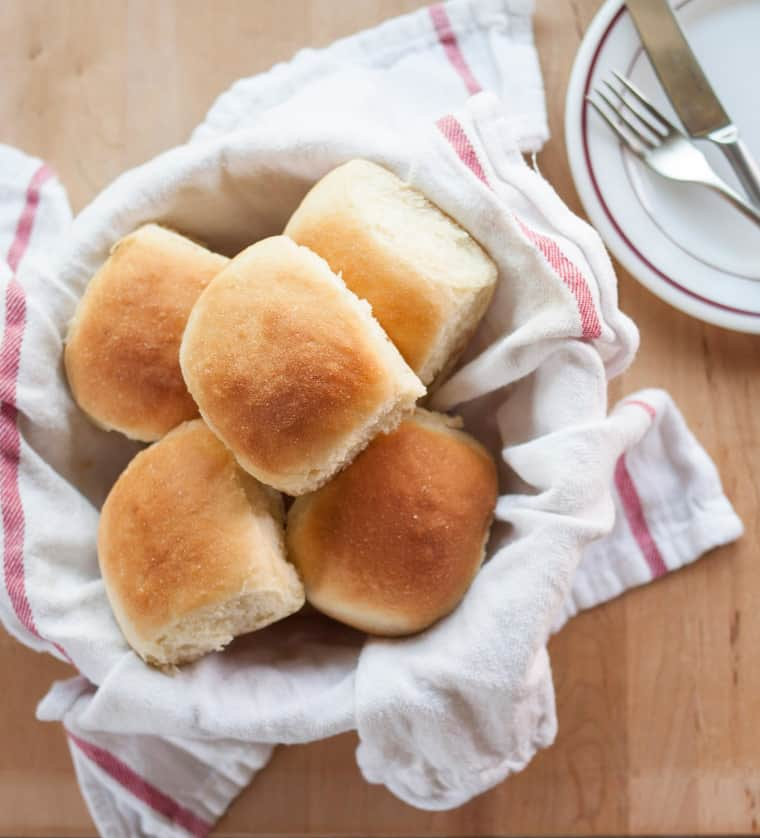Ingredients
1 tablespoon dry active yeast
1/2 cup warm water
1/2 cup milk
1 large egg
2 tablespoons vegetable oil
2 tablespoons granulated sugar
1 teaspoon salt
3 cups all-purpose flour
Cooking spray
1 tablespoon unsalted butter
Directions
- Place the yeast and warm water in the bowl of a stand mixer (or a large bowl, if mixing by hand), stir to combine, and let it sit until dissolved.
- Place the milk, egg, oil, sugar, and salt in a medium bowl and whisk to combine.
- Add this to the yeast mixture and stir until combined.
- Add all the flour and stir until it forms a shaggy dough.
- Knead on low speed or by hand against the counter until smooth but slightly tacky (it should spring back when poked), 8 to 10 minutes.
- Cover the bowl with a kitchen towel or plastic wrap. Let the dough rise in a warm spot until doubled in bulk, about 1 hour.
- Dust your work surface with a little flour.
- Scrape the dough onto the flour.
- Using a bench scraper, divide the dough into 12 pieces.
- To shape into rolls, tuck the edges underneath to form a plump little package, then roll the dough against the counter or between your palms until round.
- Line a 9×13 baking dish with parchment paper and spray with cooking spray.
- Arrange the rolls inside the baking dish so that they are spaced a little apart
- Let the rolls rise until they look pillowy and fill the pan, 30 to 40 minutes.
- Meanwhile, arrange a rack in the middle of the oven and heat to 375°F.
- Melt the butter and brush it over the risen dinner rolls. This helps the tops to brown and keeps the crust soft.
- Bake the rolls until golden-brown, 15 to 18 minutes.
- Grasping the parchment paper, lift the rolls from the baking dish to a wire rack and let sit until cool enough to handle.
- Note: These rolls are best if eaten within a day or two, but will keep in an airtight container on the counter for up to 1 week. Rolls can also be frozen for up to 3 months and reheated in a warm oven.
- Note: Doubling the recipe: Double all of the ingredients except for the yeast. To make even more rolls, it’s best to prepare separate batches as the dough becomes too cumbersome to work with easily.
